by Zachary Clemente
As New York Comic-Con’s show floor slowly shuffled to a close on Friday evening, I slipped behind the Epic Proportions booth to chat with one of my all-time favorite artists, Cliff Chiang. His recent work including DC’s Wonder Woman, Vertigo’s Beware The Creeper, and the first issue of hopefully many of Paper Girls with Brian K. Vaughan, Matt Wilson, and Jared K. Fletcher at Image Comics. We talk about the differences between working on established IPs and creator-owned work, Asian American representation in comics, and the 80’s.
Comics Beat: How has your con been so far?
Cliff Chiang: It’s been great. We planned to release Paper Girls this week just so we could celebrate and go out and party and not worry about putting the book out next week. It’s been kinda overwhelming how well it’s been received. We’ve been working on this for a long time and it’s really rewarding to finally have the book out for people to read.
CB: Considering the pedigree of the people working on it, I can’t say I’m surprised it’s being received well.
CC: Well, you never know. It’s a weird book and part of the reason our marketing was so close to the vest was because we honestly don’t know how to talk about the book without spoiling anything. The basic pitch is “four 12-year-old girls in 1988 delivering papers come across something weird.” That’s really all we could say about it but it does get weirder and weirder as we go on. I think people will enjoy that roller coaster ride.
CB: How long has the gestation period for Paper Girls been?
CC: It was around April of 2014 when Brian [K. Vaughan] and I did our yearly email check-in. I figured he had his hands full with Under the Dome and Saga, but he asked if I wanted to work on something new. We’d been trying to work together for 15 years so of course I said yeah! He sent me the Paper Girls pitch and told me if I hated it, we could do something else, but I thought, “This is the weirdest fucking thing I’ve ever read… I love it!” If someone else drew it, I was going to hate it because they would get the 80’s stuff wrong, so I had to do it. The funny thing is I feel like if one were to engineer a story now, it might contain a lot of the elements we have in Paper Girls, but it was all very organic for us more than a year ago.
CB: What would you say you and Brian drew from to engineer Paper Girls?
CC: We wanted younger protagonists who we as adults could also root for, so Spielberg was a huge keystone for me just in terms of how well he represented the suburbs and how he taps into what it’s like to be a kid. Specifically, when you look at something like E.T. and what Elliot’s life was like, there’s a lot of realism there. I love stuff that looks at the suburbs, from Spielberg to something that’s more biting like The Sopranos where they really nail what suburban life is like. I wanted to capture some of that in Paper Girls.
CB: I was raised in a suburb; I know what that’s like.
CC: Where in the suburbs?
CB: In Michigan northwest of Detroit. There’re almost these territorial divisions and myths built in. Kids have this myth of how things work and adults have a different understanding which don’t always line up. Was that something you experienced at all?
CC: Yeah, it’s something you always tap into; growing up. Movies like The Ice Storm where there’s the adult world and the kid’s world. What interests me about the suburbs is the veneer of quiet on the outside but you have no idea what’s going on inside those houses. That’s what I loved about the first issue, where they go into an empty house and there’s something crazy inside.
CB: Do you see Paper Girls as a way to blend the adult and kid’s worlds into each other?
CC: Yes! Looking at life from an early preteen point of view versus looking at it with an adult’s point of view is definitely one of the through lines for the book.
CB: I’ve always been amazed by your sense of fashion in your work – it’s clearly crucial. Was it fun for you to rebuild this 80’s style for what you needed?
CC: Yeah, it’s funny because so much 80’s stuff is back in vogue. I wanted something that was 80’s but at the same time harkened to current trends as well – trying to mix the two was kind of difficult. It’ll probably all be super out of style by next year, but I wanted to do things that felt real to that time period. I was lucky enough to have my 8th grade yearbook from 1988, which was a real window into what kids were actually wearing at that time. But you can be too beholden to that time period, so instead of being super-baggy, all the girls’ jackets are a little cropped. Tiffany and Erin are wearing almost all black and white – that’s something I wanted to do that would make them look cool now but not anachronistic to what was going on then. There are always connections you can make between things and that’s what I wanted to do.
CB: It sounds like a question between influence vs. control which I feel is present in your work. Take Wonder Woman, that had the Greek sensibilities but it wasn’t locked to that.
CC: Yeah, thank you. I do feel like I’m a product of everything I’ve grown up with. I’m influenced by many things, but how I put them back out into the world is controlled. What you want from art is for someone to digest everything that’s going on and put it back out to you in a meaningful way.
CB: We’re all looking for perspective.
CC: Yeah, exactly.
CB: Do you feel that this sort of stylistic sense came into your work on Beware the Creeper?
CC: Yeah, but you really can’t fuck with the 20’s. People were so adventurous at that time, especially in Paris – rediscovering and reinventing sexuality and art and going into it no holds barred. It was exciting time and it’s the kind of thing where the latest equivalent would’ve been Warhol in the 60’s where anything was game.
CB: This may be one of those “what is it like to work with this person” kind of question which I don’t necessarily like to pose to artists, but what sort of narrative agency are you finding in Paper Girls? Are you finding more creative freedom, in a sense?
CC: You can express yourself in many ways and what I love about working with Image is that we’re given the opportunity to do just that. In the pages of the book, we told our story a certain way, but there are other ways in which you experience the creators’ vision – such as the cover art, the paper stock, where the page breaks happen, if there are ads, where the ads are…. All those things are crucial to the reader’s experience, and with Paper Girls, I love being able to control those elements because it’s the fine-tuning of the project.
CB: You get to really hone in on what makes Paper Girls special for you and represent that in the work as best you can.
CC: Yes, I feel that we’re in an age where it’s very easy to consider monthly comics a mass-market product where all the books look the same and we’ve lost that sense of personal communication between the creators and the audience.With Paper Girls, I wanted to make it very tactile and make sure people got a product that felt hefty, that felt like they were getting their money’s worth and luckily we’re able to do that. It costs a little bit more but it’s worth it to do that to make the audience feel like they’re valued. We have an opportunity to be more personal and speak directly.
CB: That tactile feeling works very well since the first issue is double-sized; not only do you get more story, but it physically adds weight to the book which makes it a unique thing to exist. How do you feel this uniqueness is being fostered by who you’re working with?
CC: Well, I think Brian has been really great about making readers feel special – the way he writes the book and the letter columns – and that’s an extension of this. Start with a big book so people get a lot of content to decide whether they want to keep following or not. Often, 20 pages is not a lot to work with, so we gave people a big chapter and didn’t charge more for it because we could.
CB: Shifting gears a little bit, something I’ve enjoyed about your work is the ability to “read” characters – to recognize them easily even if they’re not fully in frame. Did you have some challenges when it comes to addressing that with four similar protagonists?
CC: You know, Brian’s script is so clear, when you read it you can hear those voices and you know who those girls are. For me, the challenge was bringing that to life through their clothing and their attributes without being too cliché or obvious about them. So, KJ is our jock character but she’s not wearing a baseball hat or carrying a baseball bat – she’s got a field hockey stick which is something that is awesome when you look at it and it’s something that’s tied to a certain age as well. Erin is so close to me at that age and the girls that I was friends with. A lot of it was just trying to capture the friends I had at that age, how I remember feeling about them, and knowing them now as adults and honoring that. I never wanted to delve into cliché, I always wanted to present them all as individually as possible so they all have specific things going on with the way they dress and how they talk and the expressions that they make. I think that adds to making them feel like someone you might know.
CB: I have a bit of an offbeat follow-up question.
CC: Yeah?
CB: Do you enjoy drawing bikes?
CC: It was one of the hardest things about the first issue – it probably doubled the time it took to draw it because bikes are so three-dimensionally complex. I grew to like it but it’s a lot harder than it looks.
CB: I have friends who build custom bikes from scratch and that shit’s hard.
CC: Yeah, so many parts! And I don’t know a lot of that stuff, too so trying to figure out the parts and how they might’ve been customized for each kind of bike was pretty hard. I had to find specific makes and models for each of them. […] None of them are riding a 10-speed, I don’t think any 12-year-olds would’ve really had one in the 80’s – and that was pre-mountain bike era, too. They would’ve been riding either what they had as little kids or what they were moving up to.
CB: They might’ve been hand-me-downs.
CC: Yeah, for instance Erin’s riding her kid/girl Huffy bike, you know?
CB: Also are there any beads or whatever on the spokes?
CC: Yeah yeah, how were you gonna personalize your bike?
CB: It’s always interesting to find out what people do and don’t like drawing and how that influences the work.
CC: I don’t know if anyone loves drawing vehicles. When it comes to cars or bicycles or motorcycles, they’re cool but when you put them in conjunction with a person, it’s suddenly 10 times harder. That’s the one benefit, I find, of working digitally is I can change proportions really easily. If I draw a bike and the person standing next to it is way too small, I can fix that easily.
CB: On that note, what is your process for working on a page of Paper Girls?
CC: Brian writes a very straight-forward script where I can see very clearly in my head what’s going on. I spend a few days thumbnailing it – breaking down how many panels per page, where the speech balloons go. When I get into the real drawing, I try to do a page a day – digitally penciling it in the morning and afternoon and then ink it in the evening so I’m done with it by the end of the night.
CB: How far deep are you into it now?
CC: We’re pretty far into it: I’m working on the 5th issue after the show so we’re doing pretty well. One of the things I like, again, about this being a creator-owned book is that we’re setting our own schedule. We started working on it earlier this year and it takes a lot of self-control to keep working on something that’s not going to be out for months, you know? You do want your work to be out there and you want to see what people think about it. But by having so many issues in the can, we were able to find out what this book means to us before letting other people see it.
CB: It must be nice to have the extra level of passion available to you because this is yours. Undoubtedly your work on Wonder Woman is meaningful but ultimately you’re sharing that love with so many other people.
CC: Yeah, it’s maybe the thing that I’ve enjoyed the most. It’s creatively invigorating because everything we do goes towards making Paper Girls better. With Wonder Woman, I felt the burden of expectation through a lot of it — in terms of how well she’s been done in the past, what readers might expect of me — and with Paper Girls it was so nice to have a blank slate and to be able to call the shots on the characters, and I love that.
CB: Something I’ve noticed in your work is the inclusion of hand-drawn SFX. I remember seeing it a lot in Wonder Woman and it’s showing up again in Paper Girls.
CC: Those were done by Jared Fletcher and he did such a great job with them. With Paper Girls, I wanted to ease the burden on everyone else, especially Jared, so I’m doing the SFX by hand now myself and trying to integrate them into the art even more by looking at Frank Quitely’s work and various indie books. The whole thing with Paper Girls is that we want it to feel organic and personal so we don’t want the usual comic SFX that don’t feel like they’re part of the artwork.
CB: Before the interview, we were discussing diversity in art and comics.
CC: I love that Brian’s written such a diverse cast for this book and having grown up myself in suburban New Jersey, yeah, you could absolutely see this group of girls getting together. I grew up girls like these and to see that reflected is really great. For me, personally, I think Erin being Asian American really invests me more in the project because I want to show what it was like to grow up as an Asian kid in the 80’s. It’s a different facet of childhood that we don’t often see, but we should because there’s a whole rainbow of experiences out there. As much as we want Paper Girls to be accurate or authentic to the 80’s, we need to reflect our audience now.
CB: It’s interesting, the panel I was just attending (Push Diversity Forward), it was discussed that “authenticity” can sometimes be used as a wall to hide behind when challenged on diversity in creative work. It’s heartening to hear that it’s something being considered. With respect to being an Asian-American creator, what you’re doing and thinking about severely matters.
CC: I’ve been asked what’s it like to be Asian-American in the comics industry and the funny thing about it is I’ve never really experienced any overt racism in my career. A lot of that is due to people like Larry Hama, Jim Lee, and Jae Lee who totally proved that you could do awesome comics and be Asian-American. So no one was ever going to ask, “Can Asians draw comics?” No, it was more like “How many more Jim Lee’s can we get?” If anything, I may have felt a pressure to differentiate myself from Jim’s or Jae’s style because I was Asian. But really, it’s not enough to just be working in the industry, we also have to make sure we have Asian-American characters represented in the books for people to read. It was only fairly late into my career that I realized that my visibility as a creator made other Asian-Americans see comics as being possible for them.
CB: For me, seeing people like you or Gene Yang or Greg Pak means a hell of a lot to me. So thank you and keep on keeping on.
CC: It’s for all of us, you know? There are so many Asian-Americans who are into cool stuff like comics and games and it’s great to see more people making good content for that audience.
CB: Well, thank you very much Cliff.
Cliff Chiang lives in Brooklyn, New York and creates comics. His upcoming work is the continuing issues of Paper Girls at Image Comics. He, predictably, dresses incredibly well and may, under the correct circumstances, share a bit of sake with you.


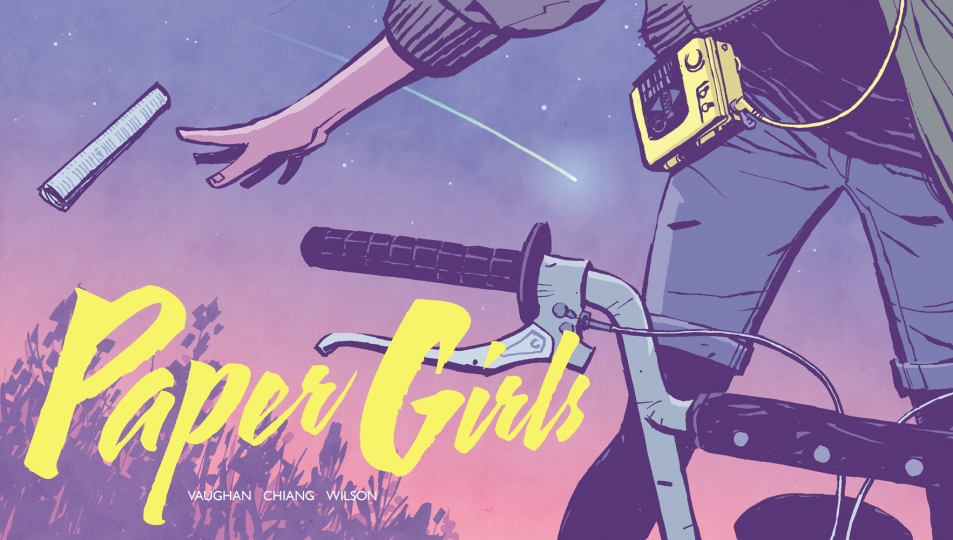
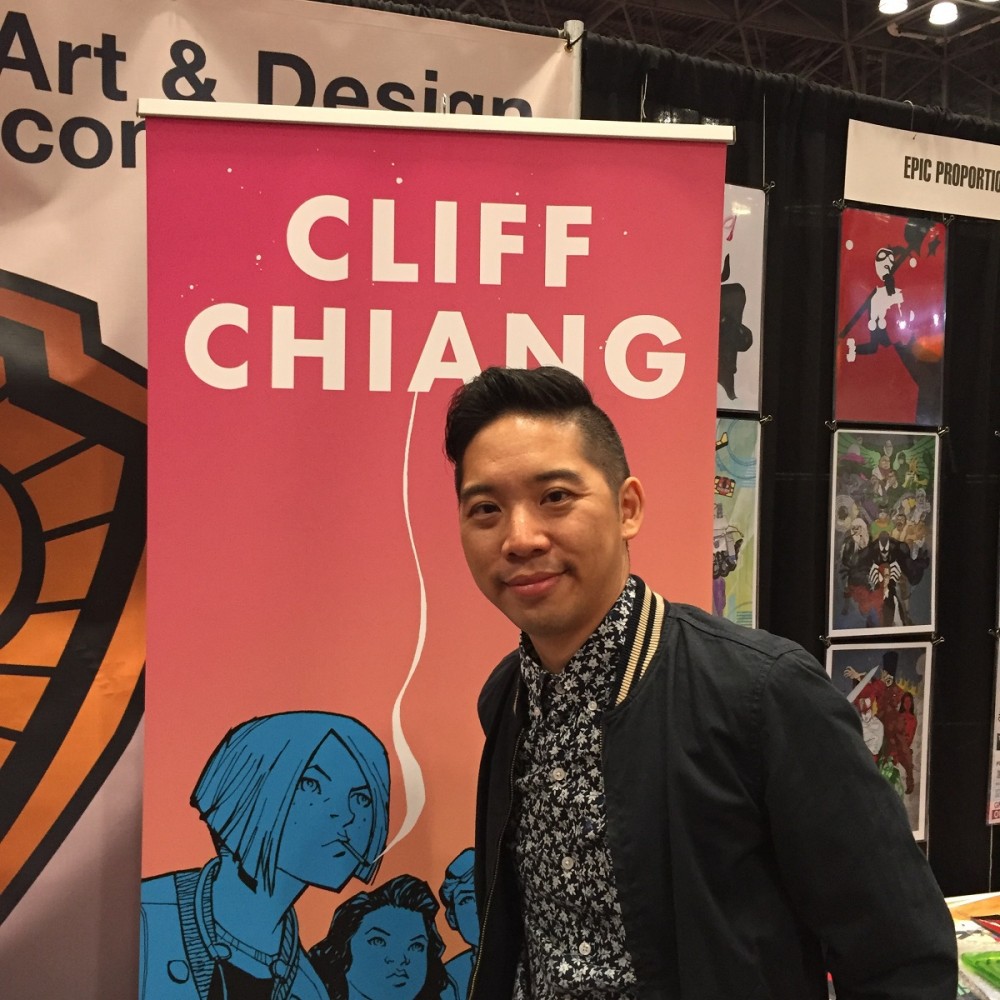
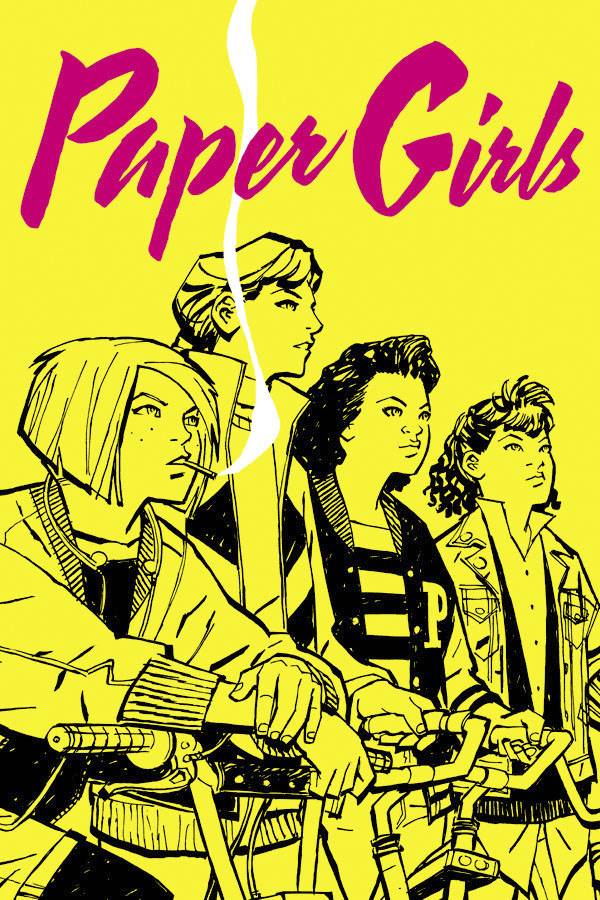
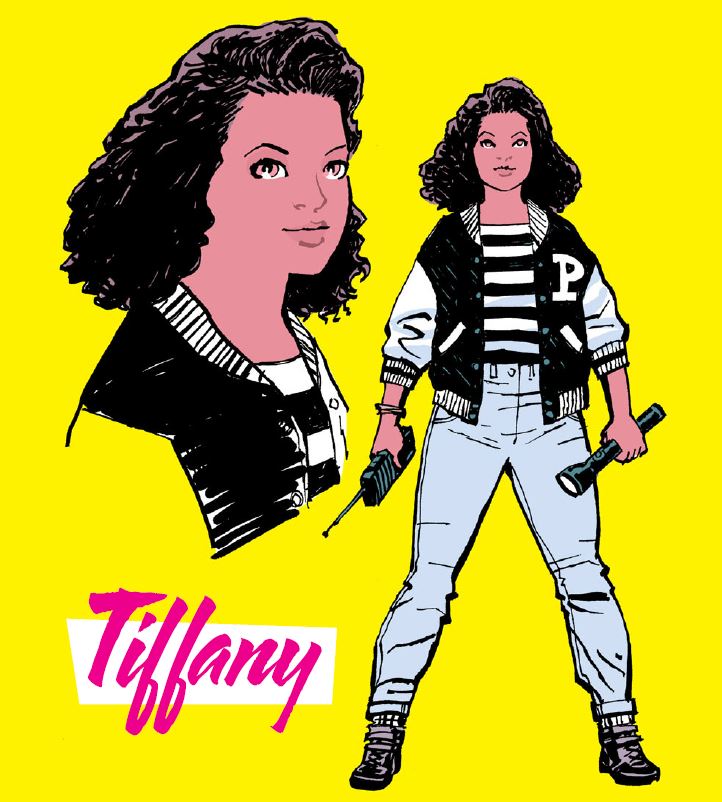
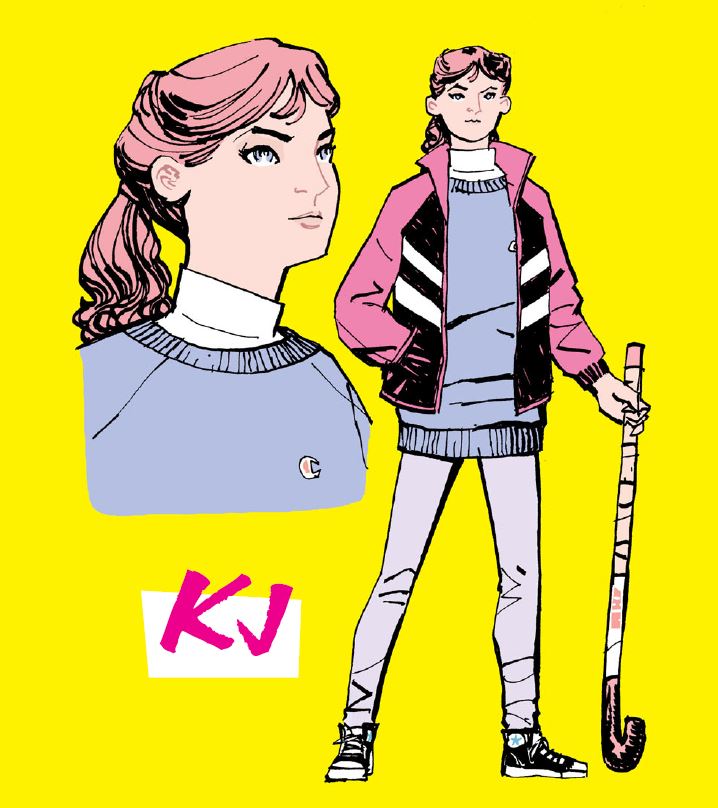
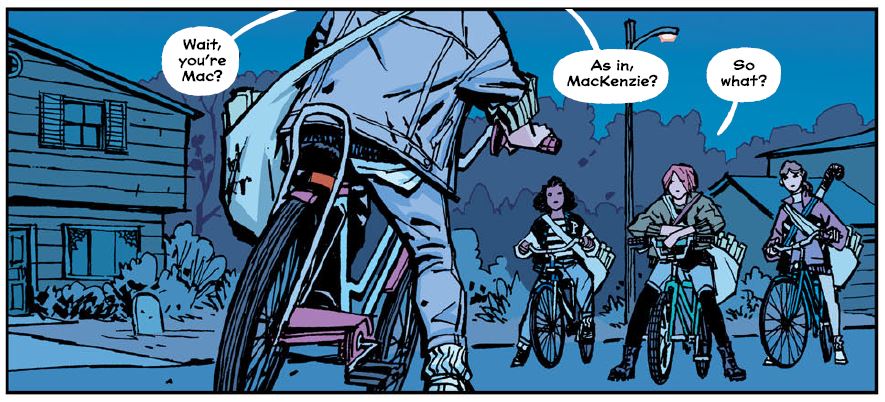
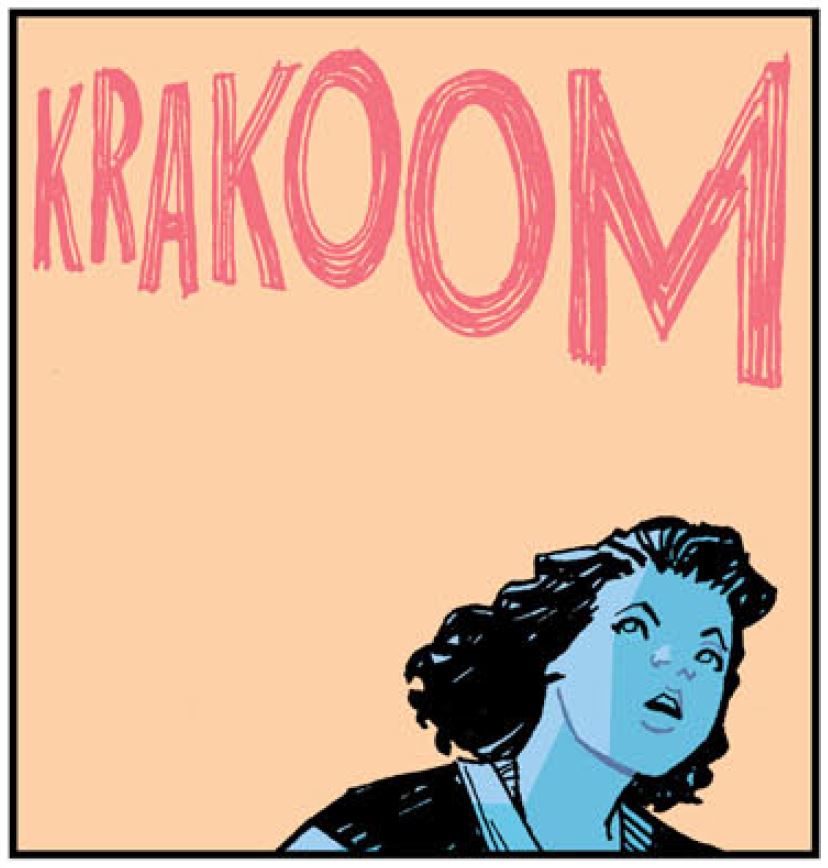

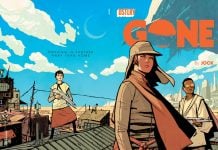
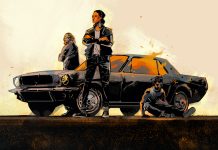
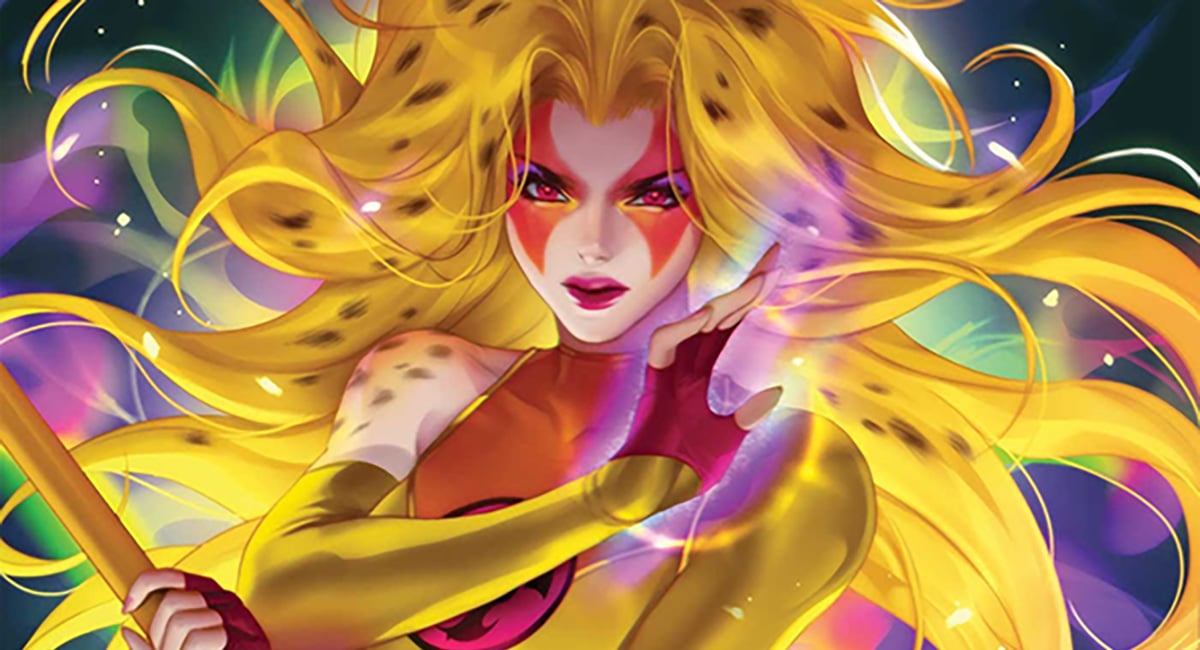

Wow, I totally missed that Erin is Asian-American. Yay, I’m color-blind! Or maybe just inattentive.
(Though I don’t thinks she’s given a last name, and Chiang’s art is subtle enough, and the issue isn’t raised in dialogue the way religious differences are….)
In any case, I’m glad she’s there for readers for whom this is a real concern.
Comments are closed.